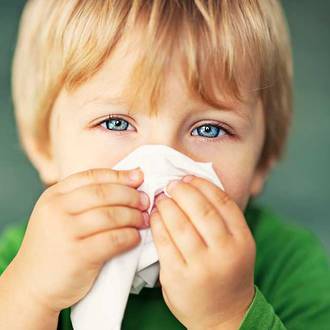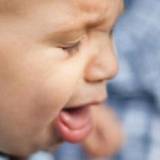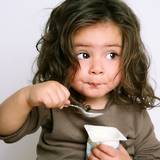Hay fever tips for young kids
|
Do you have young kids who are prone to seasonal hay fever? Runny nose, itchy eyes and lots of sneezing? As we head into the warmer months seasonal hay fever will start to strike. Find out what you can do to help.
|
You might also be interested in ...
Quick guide to kids coughs
Check out our quick guide to kids coughs and coughing - common types of coughs you might come across this winter. Kids coughing is not uncommon at this time of year, but would you be able to recognise what sort of cough it is and how to treat it? Here are some of the more common types of coughs, symptoms and how you can help treat them.
Are kids yoghurts doing more harm than good?
Many of us buy yoghurts for our kids because of the widely published health benefits they have, ranging from friendly bacteria to the amount of calcium they contain. But not all yoghurts are created equal! Some types of kids yoghurts have the same amount of sugar and additives in them as chocolate desserts! So how do you tell the difference between 'real' kids yoghurts that offer health benefits from other ‘fake’ kids yoghurts that just taste good?







As we head into the warmer months seasonal hay fever will start to strike.
It is commonly caused by pollen, which if it comes into contact with young kids eyes and nose, can set off an allergic reaction.
The beginning of hay fever season can start at different times around the country and the amount of pollen in the air can vary throughout the day, typically with the highest pollen counts between 10am and 4pm.
Hay fever tips for young kids
Hay fever symptoms
Most symptoms in young kids hay fever (also known as allergic rhinitis) are the same as for adults.
The most common hay fever symptoms are itchy eyes and a runny or stuffy nose.
Other hay fever signs in young kids include watery eyes, reddened lower eye lids, an itchy throat, snoring, frequent sneezing (particularly in the morning), ear infections or earaches and occasionally rashes and swelling of the face.
Because pollen counts can vary from day to day, symptoms can also vary.
Some young kids show multiple symptoms whilst others only show a few.
Some are susceptible to a variety of different pollens, and some young kids are affected by just one or two.
10 Tips on surviving the hay fever season
1. If you suspect your kids have hay fever take them to be examined by a doctor and prescribed age-appropriate antihistamines and nasal sprays.
2. At home, if your kids have itchy, swollen eyes, you can apply a cool damp cloth to offer some temporary relief.
3. Kids sunglasses can help protect their eyes from the pollen dust when they're outside and offer some relief too.
4. Try to keep young kids away from freshly cut grass.
5. Try to keep windows and doors closed when the pollen count is high to prevent it from entering the house. This applies to car doors and windows too.
6. Wash your kids bed linen weekly in hot water (above 50 degrees Celsius) to kill dust mites and remove pollen.
7. Dry laundry inside on days when the pollen count is high as washing on the line is a target for blowing pollen.
8. Put a dab of petroleum jelly or natural balm around the edge of your kids noses to catch pollen granules before they enter your kids nostrils.
9. Shower and wash your kids hair after they’ve been playing outside on high pollen count days to remove any traces of pollen.
10. Synthetic fabrics tend to build up static electricity which in turn attracts pollen, so try to dress young kids in natural fabrics.
More kids articles to enjoy:
- Food intolerance in kids
- Cows milk allergy
- When can babies eat eggs?
Image source: Betterhomesgardens